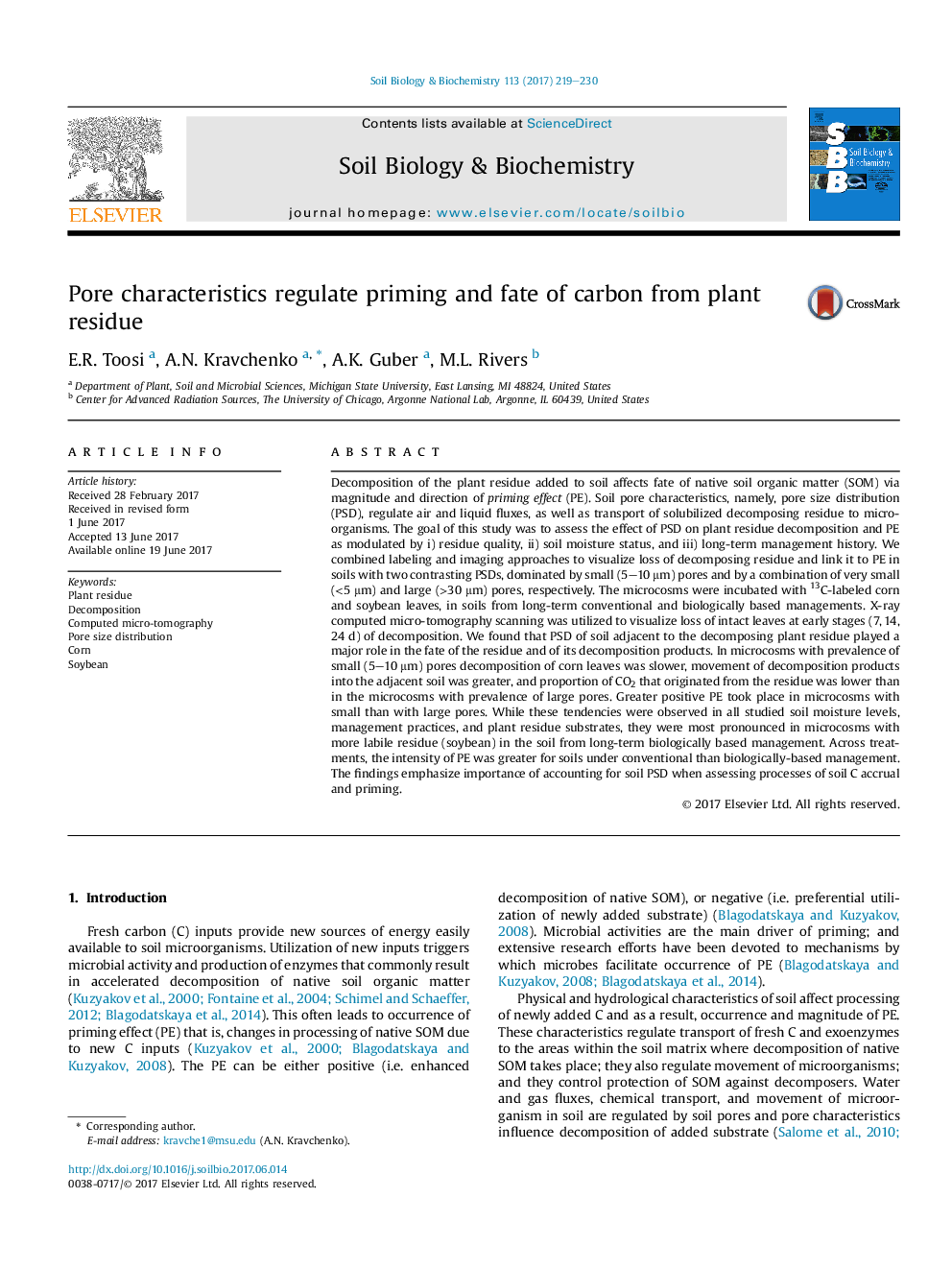| Article ID | Journal | Published Year | Pages | File Type |
|---|---|---|---|---|
| 5516384 | Soil Biology and Biochemistry | 2017 | 12 Pages |
â¢Presence of large pores stimulates decomposition of plant leaf residues.â¢Greater movement of decomposition products occurs in presence of small pores.â¢Greater positive priming due to plant residue occurs in presence of small pores.
Decomposition of the plant residue added to soil affects fate of native soil organic matter (SOM) via magnitude and direction of priming effect (PE). Soil pore characteristics, namely, pore size distribution (PSD), regulate air and liquid fluxes, as well as transport of solubilized decomposing residue to microorganisms. The goal of this study was to assess the effect of PSD on plant residue decomposition and PE as modulated by i) residue quality, ii) soil moisture status, and iii) long-term management history. We combined labeling and imaging approaches to visualize loss of decomposing residue and link it to PE in soils with two contrasting PSDs, dominated by small (5-10 μm) pores and by a combination of very small (<5 μm) and large (>30 μm) pores, respectively. The microcosms were incubated with 13C-labeled corn and soybean leaves, in soils from long-term conventional and biologically based managements. X-ray computed micro-tomography scanning was utilized to visualize loss of intact leaves at early stages (7, 14, 24 d) of decomposition. We found that PSD of soil adjacent to the decomposing plant residue played a major role in the fate of the residue and of its decomposition products. In microcosms with prevalence of small (5-10 μm) pores decomposition of corn leaves was slower, movement of decomposition products into the adjacent soil was greater, and proportion of CO2 that originated from the residue was lower than in the microcosms with prevalence of large pores. Greater positive PE took place in microcosms with small than with large pores. While these tendencies were observed in all studied soil moisture levels, management practices, and plant residue substrates, they were most pronounced in microcosms with more labile residue (soybean) in the soil from long-term biologically based management. Across treatments, the intensity of PE was greater for soils under conventional than biologically-based management. The findings emphasize importance of accounting for soil PSD when assessing processes of soil C accrual and priming.
